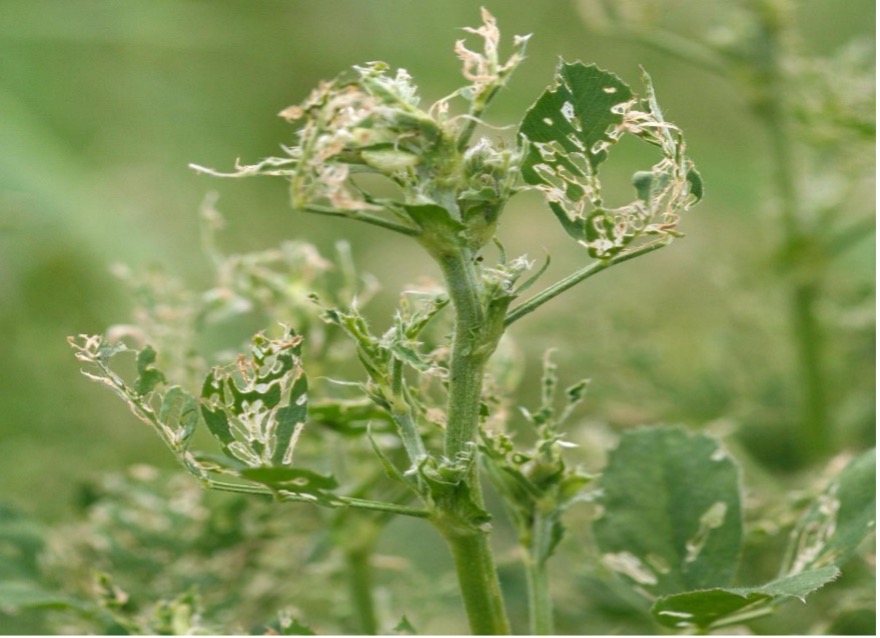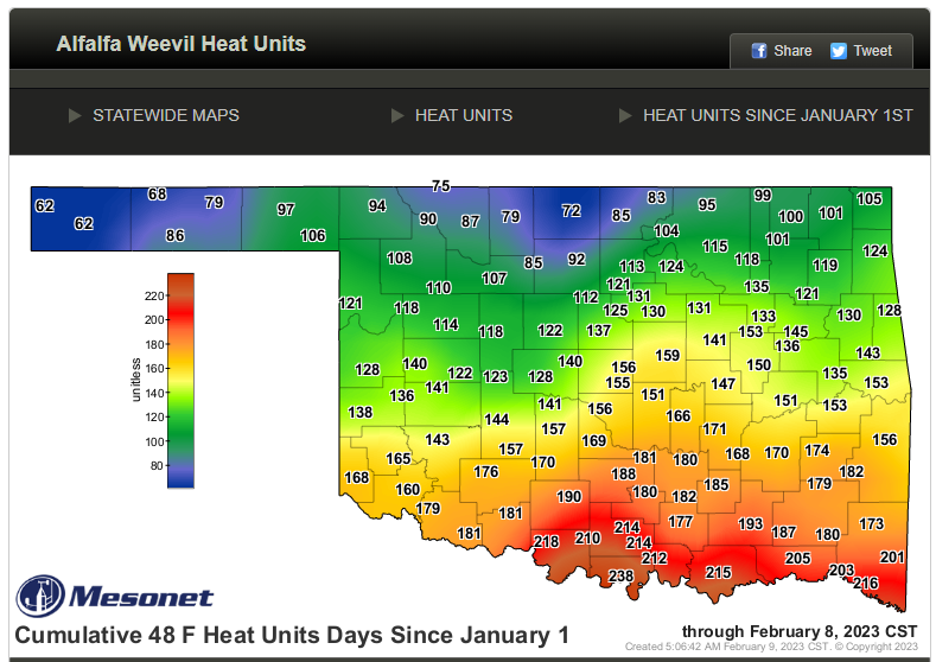Planning for Alfalfa Weevil Season
Producers of alfalfa realize that the alfalfa weevil is the most troublesome alfalfa insect pest in the state. While other insect problems do occur and require treatment, they are often sporadic and vary with seasonal conditions. Alfalfa weevil habits have been studied since there arrival in the early 1970’s and have been a perennial problem ever since.
Life Cycle and Damage. The alfalfa weevil is a snout beetle about 3/16 inch in length and light brown in color with a dark brown, mid-dorsal band (Fig. 1); This insect completes one generation per year. The life cycle begins in late fall when adult weevils enter alfalfa fields from their summer resting sites (dense vegetation such as fence rows and along creek bottoms). Adults normally begin laying eggs inside stems of alfalfa plants during November and continue until April or May of the following year (Fig. 2).
Figure 1. Adult Weevil
Photo: University of Nebraska Extension
| Image | Caption |
|---|---|
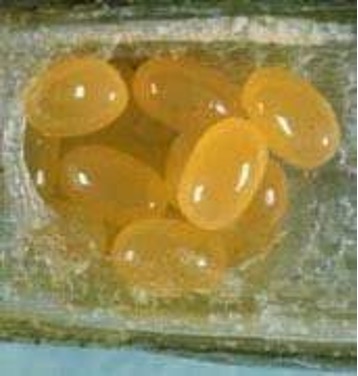 |
Figure 2. Alfalfa Weevil Eggs in stem |
Egg lay (oviposition) can continue throughout winter, when temperatures rise above 48 ° F, and eggs may accumulate before hatching begins during late winter. If weather is suitable, as they hatch, larvae leave the stems and crawl to newly developed alfalfa terminals to begin feeding. In recent years, monitoring for eggs in late January or early February, has produced minimal numbers of eggs that have survived the extreme winters. Once weather moderates in the spring, adult activity begins, and new eggs will be deposited. This usually occurs around the time alfalfa is breaking dormancy in March.
Newly hatched larvae (1st instar) are yellow in color and feed on developing leaf tissue within plant terminals (Fig. 4). As they grow, larvae feed in more exposed locations on leaves and can be recognized by their green color and shiny black head capsules (Fig. 3). Larval numbers usually increase rapidly as plant growth begins, typically mid-March, and the potential for defoliation in early vegetative growth begins. The peak in larval numbers and greatest amount of damage generally occurs during March and April.
| Image | Caption |
|---|---|
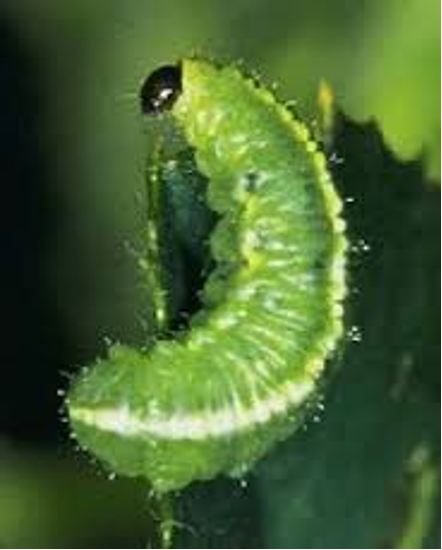 |
Figure 3. Alfalfa Weevil Larva |
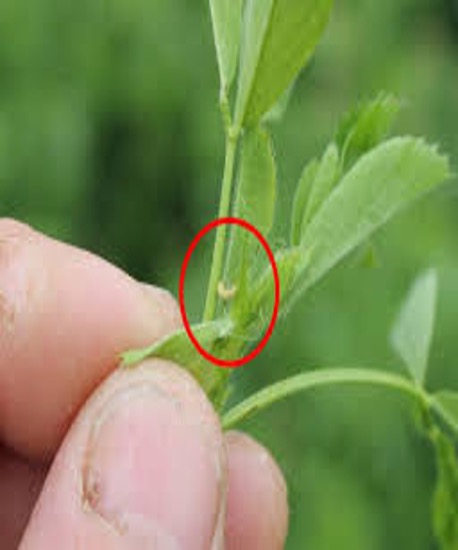 |
Figure 4. Early instar feeding near terminal |
Yield reduction of alfalfa due to defoliation by weevil larvae is about 170 lb/acre in the first crop for each increase of 1 larva/stem in the population. An additional reduction can occur in the second crop due to loss of vigor in damaged alfalfa stands. Combined losses due to actual feeding damage (Fig. 5 & 6) in the first crop and residual effects later can total more than 300 lb/acre for each increase of 1 larva/stem. It is essential that timely management decisions be made when results of field scouting indicate that weevils are present in high numbers and potential losses due to feeding will exceed the cost of control (at the economic threshold).
The period when larval numbers exceed the economic threshold may vary greatly by year and location in Oklahoma, ranging from late February to mid-April.
Figure 5 & 6. Alfalfa Weevil Damage
Colorado State University, Bugwood.org.
Sampling and Control. The general scouting procedure designed for use in decision-making relative to management decisions takes into consideration, 1) accumulated heat energy (degree-days) for weevil development, 2) alfalfa plant height, and 3) number of weevil larvae collected in a 30-stem sample. Degree-day values for each county can be obtained from the Oklahoma Mesonet System, Alfalfa Weevil Model (Fig. 7).
Field checking for weevil larvae should begin when a total of 150-day degrees have accumulated after January 1. This accumulation is reached by late February to mid-March in southern and central Oklahoma. Northwestern and Panhandle areas will be somewhat later in reaching 150-day degrees. Keep in mind this is an estimate for when to start scouting. Current numbers indicate degree days at or above 150 in the southern part of the state. However, after reaching the 150 DD mark, many factors can influence continued larval development. Winter weather events and cool wet weather can help in suppression.
Figure 7. Accumulated Degree Days (heat units) Since January 1, 2023. Oklahoma Mesonet.
Specific values obtained for the three sample variables listed above are combined in a recommendation chart (CR-7177, Scouting for the Alfalfa Weevil in Oklahoma) to determine if spraying is warranted. If spraying is not recommended on a particular sampling date, a time interval for resampling is given. This is the most accurate sampling procedure for decision-making, particularly when sampling after application of insecticide or following a period of freezing weather that may have killed some larvae.
Continued scouting is Key!!!


